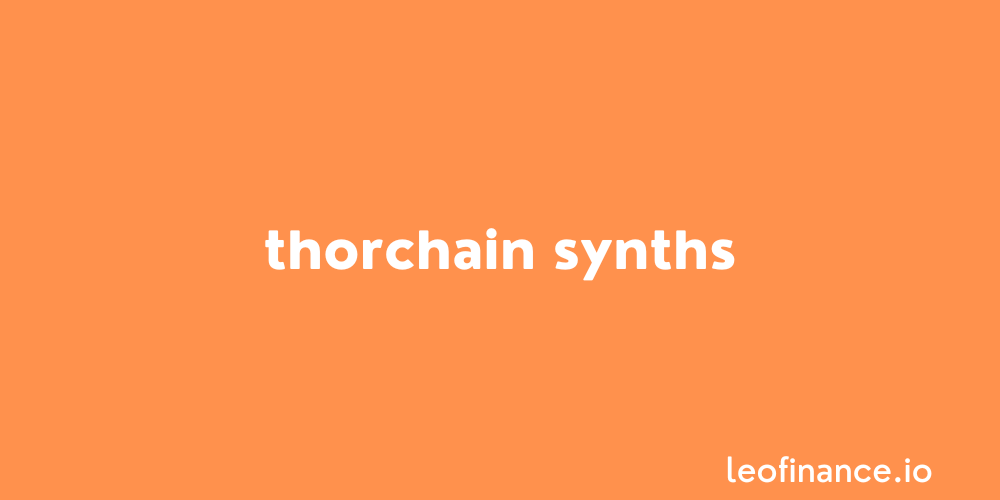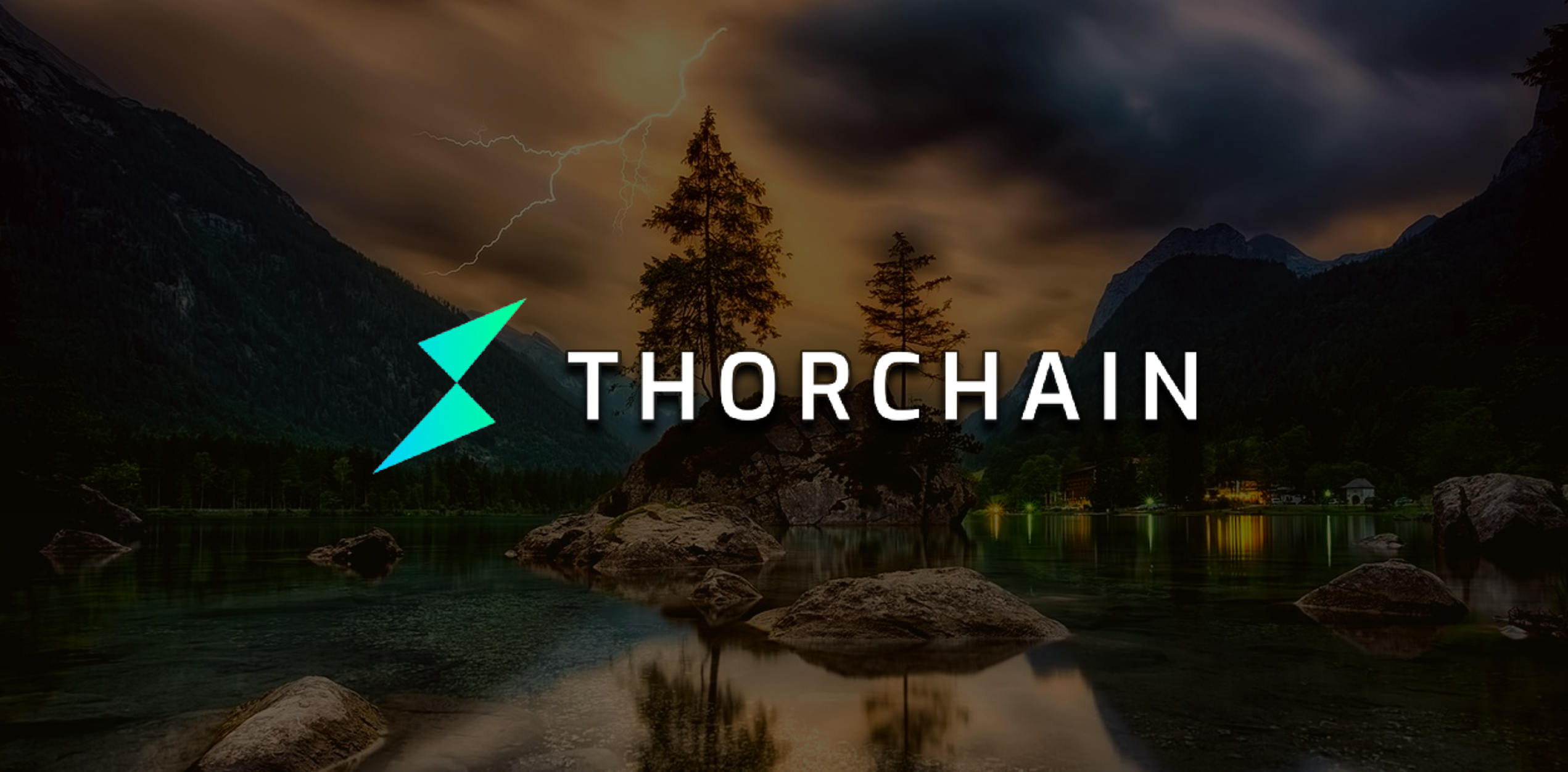
Direct from the desk of Dane Williams.
A look at THORChain synths and why they are a true game changer in the DeFi space.
Synthetic assets, or synths for short, have been making waves in the crypto space.
These digital assets allow investors to gain exposure to various markets without having to physically own the underlying assets.
And while other projects have attempted to create synths, none have quite taken the same route as THORChain (RUNE).
In this blog post, I’ll be diving into THORChain synths and why they are a true game changer.
So let's explore what makes THORChain synths so unique and why they are changing the game when it comes to synthetic assets.

What are THORChain synths?
THORChain is a decentralised liquidity network that allows users to permissionlessly trade native assets between different blockchain networks.
Its native token, RUNE, serves as the base asset for its liquidity pools which are used to facilitate trades on the platform.
Recently, THORChain added synthetic assets to its network, which are tokenised derivatives that track the value of real-world assets like stocks, commodities, and cryptocurrencies.
These synthetic assets are known as THORChain Synths.
THORChain Synths work differently from other synthetic assets, such as those offered by the Sythetix (SNX) protocol.
THORChain Synths are backed by a liquidity pool that contains 50% of RUNE and 50% of the underlying asset.
This means that when users want to mint a THORChain Synth, they add either RUNE or the actual crypto asset to the liquidity pool.
The Synth is then issued against the pool ownership.
This approach allows users to mint Synths without requiring a high collateralisation ratio.
Collateralisation and pegging of THORChain synths
THORChain Synths are pegged to the value of the underlying asset they track.
This means that the value of a THORChain Synth should closely follow the price of the asset it represents.
For instance, if a THORChain Synth is tracking the price of Bitcoin (BTC), its value should be similar to the price of BTC.
To ensure that THORChain Synths are always properly collateralised, the network uses a mechanism known as "continuous liquidity provision."
This means that liquidity providers (LPs) are incentivised to maintain the value of the liquidity pool by providing assets to the pool.
LPs earn fees when users trade THORChain Synths and the fees are paid out in the form of the underlying asset and RUNE.
One of the unique features of THORChain Synths is that they remove impermanent loss, a common problem for liquidity providers in automated market makers.
Impermanent loss occurs when the price of the asset being traded moves significantly against the liquidity pool.
This results in a loss of funds for LPs, as they are essentially providing liquidity to the pool.
With THORChain Synths, the protocol structure maintains a reserve pool of RUNE tokens, which it uses to pay block rewards for node operators and liquidity providers.
The reserve pool is also used to offset any difference in the synthetic asset's value to that of the actual asset upon redemption, thus preventing impermanent loss.
Why THORChain synths?
The addition of synthetic assets to THORChain's network is expected to grow the network usage significantly.
THORChain Synths offer users several advantages, such as taking advantage of lower fees, performing faster transactions and having access to 24/7 trading.
These benefits are possible due to the efficiency of THORChain's liquidity network, which eliminates the need for any third party such as a centralised exchange.
THORChain Synths are also cheaper to exchange than layer-1 assets and there is a 50% reduction in swap fees when swapping between:
- Asset to Synth
- Synth to asset, or
- Synth to Synth.
Additionally, THORChain Synths provide users with a more lucrative way to yield farm.
Users can earn a return by simply locking their assets in a vault, eliminating the need to understand the concept of liquidity pools and the risks of impermanent loss.
Not to mention the integration of synthetic assets to THORChain's network has certainly led to increased liquidity and trading volume on the platform.
THORChain claims to have processed over 1.64 million transactions since its inception, and the addition of Synths is expected to attract even more.
Summing up, the rise of synths has opened up new investment opportunities in the crypto space.
However, while other projects have attempted to create synths, none have taken the same approach as THORChain (RUNE).
By providing single asset exposure, lower gas fees, yield farming, increased liquidity AND increasing cross-chain compatibility, THORChain synths truly are a game changer in the DeFi space.
As the industry continues to evolve, it's going to be exciting to watch how THORChain synths will shape the future of permissionless cross-chain swaps.
Best of probabilities to you.
Posted Using LeoFinance Beta
I have heard a lot about it offsetting impermanent loss but what would happen if one tokens goes down to zero? Wouldn't the underlying asset on one side kind of disappear and trying to offset the costs would be quite costly? I understand there is a reserve but that has it's limits.
Posted Using LeoFinance Beta